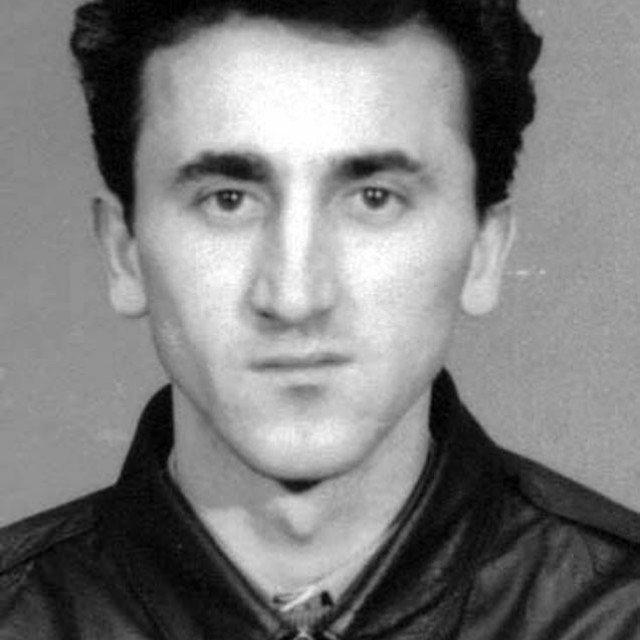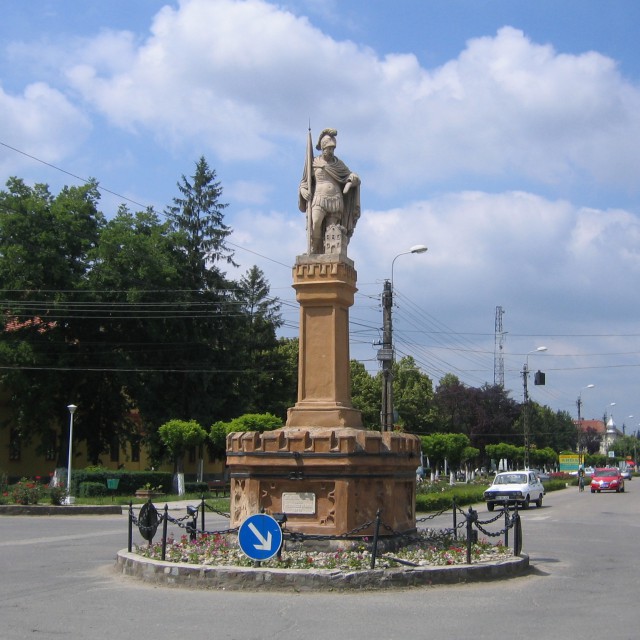
George Sava
He was born on September 13, 1962 in Viişoara, a village in the commune of Păuneşti, Vrancea County, into a family of peasants. In the Autumn of 1962, his father, Leon Asavei, was forced to join the collective farm. In 1978, George Sava, aged 16, got hired as a worker at the Rulmentul plant in Braşov. Then, between 1982-1983, he worked as a miner at the Lupeni mine, and from 1983 to 1989 at the city fire department. At the same time, he graduated from high school after having attended night school, and then had several unsuccessful attempts to be admitted to the Faculty of Letters in Bucharest. In the summer of 1986, his brother, Costică Asavei managed to cross the border illegally to Serbia, afterwards succeeding to get to the United States of America. In 1989, dissatisfied with living conditions in Romania, George Sava decided to protest against the regime by giving out manifestos in Lupeni, and then finally became determined to leave the country, by crossing the border illegally to Serbia. In order to avoid raising any suspicion on the part of the communist authorities, George Sava gathered materials for manifestos, (cardboard, markers), over several weeks. At the same time, he carefully prepared his departure from the country. With the help of his girlfriend, Mariana Lazăr, he prepared manifestos with anti-communist slogans, ("Down with the Securitate!", "Down with Communism!", "Down with Ceauşescu!"), which he then distributed by sticking them to the walls of several buildings in the city, in the night of October 19-20, 1989. On the morning of October 20, George Sava and Mariana Lazăr left for Timişoara with the intention to flee the country. Once in Timişoara, they took the train to Otelec, a town at the border with Yugoslavia, but were arrested by border guards on the train. After being questioned about their intention to cross the border, the two were taken to the border guards' unit in Jimbolia, where they were held together with other 70 people that had also been arrested for "attempting to cross the border illegally." After three days spent in the custody of border guards in Jimbolia, the two were released. Back in Lupeni, on October 24, under the pretext of an investigation related to an instance of dynamite theft from the mine, George Sava was called to the militia station to give a statement, which was afterwards used to identify the handwriting on the anti-communist manifestos, which had been spread in the night of October 19-20. Following a militia search of his home, in which the militia found draft manifestos, George Sava and his girlfriend, Mariana Lazăr, were arrested again in the evening of October 24. After the arrest, the two were separated and would only see each other after their release. George Sava was first taken to the militia headquarters in Lupeni, where a brief investigation was done, then transferred to the Securitate headquarters in Petroşani, and, after three days, to the Criminal Investigation Department of the Securitate on Calea Rahovei, Bucharest. He remained there until December 22, 1989, when he was released along with all the other detainees in the outbreak of the revolution. After 1990, he graduated from the Faculty of Journalism and Communication Studies at the University of Bucharest. He worked as a journalist at the "România Liberă" [Free Romania] newspaper until 1999, when he immigrated to Canada. Once he immigrated to Canada, he changed his name from Gheorghe Asavei to George Sava. He currently lives in Canada, where he runs a publication dedicated to the Romanian community.



